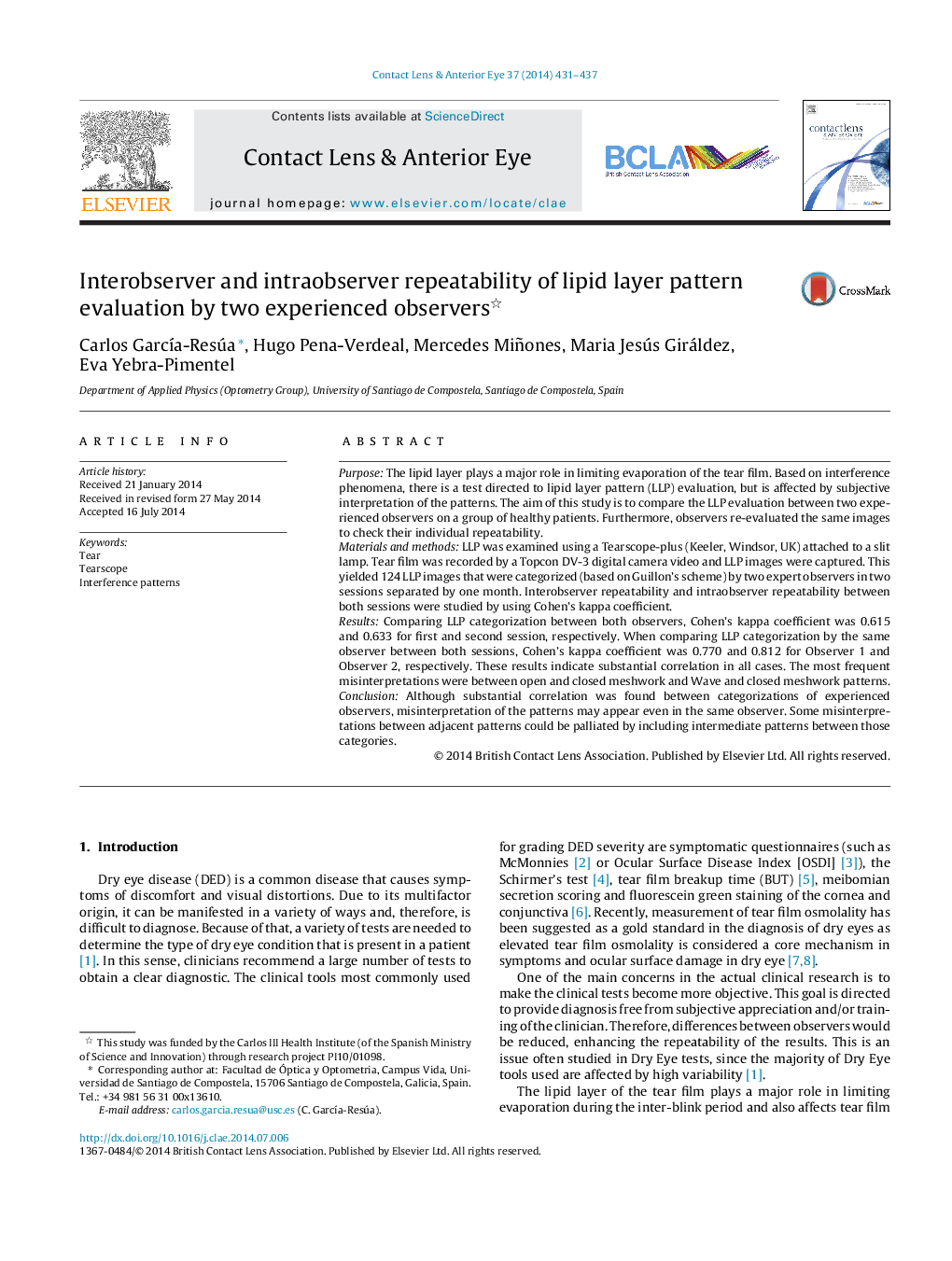| Article ID | Journal | Published Year | Pages | File Type |
|---|---|---|---|---|
| 2699089 | Contact Lens and Anterior Eye | 2014 | 7 Pages |
•We compare lipid layer pattern evaluation between two sessions (intraobserver).•We compare lipid layer pattern evaluation between two observers (interobserver).•Concordance between categorizations depends on type of lipid layer pattern.•For intraobserver analysis, thicker patterns show better agreement.•For interobserver analysis, the agreement was lower within thin to average patterns.
PurposeThe lipid layer plays a major role in limiting evaporation of the tear film. Based on interference phenomena, there is a test directed to lipid layer pattern (LLP) evaluation, but is affected by subjective interpretation of the patterns. The aim of this study is to compare the LLP evaluation between two experienced observers on a group of healthy patients. Furthermore, observers re-evaluated the same images to check their individual repeatability.Materials and methodsLLP was examined using a Tearscope-plus (Keeler, Windsor, UK) attached to a slit lamp. Tear film was recorded by a Topcon DV-3 digital camera video and LLP images were captured. This yielded 124 LLP images that were categorized (based on Guillon's scheme) by two expert observers in two sessions separated by one month. Interobserver repeatability and intraobserver repeatability between both sessions were studied by using Cohen's kappa coefficient.ResultsComparing LLP categorization between both observers, Cohen's kappa coefficient was 0.615 and 0.633 for first and second session, respectively. When comparing LLP categorization by the same observer between both sessions, Cohen's kappa coefficient was 0.770 and 0.812 for Observer 1 and Observer 2, respectively. These results indicate substantial correlation in all cases. The most frequent misinterpretations were between open and closed meshwork and Wave and closed meshwork patterns.ConclusionAlthough substantial correlation was found between categorizations of experienced observers, misinterpretation of the patterns may appear even in the same observer. Some misinterpretations between adjacent patterns could be palliated by including intermediate patterns between those categories.
